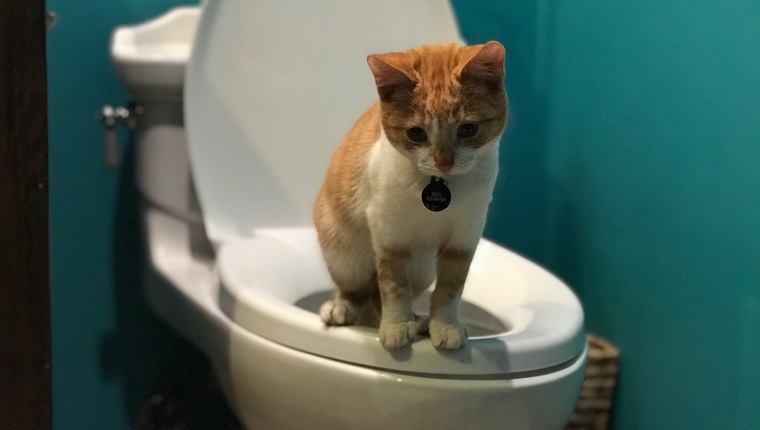Prevent Plumbing Problems: Don't Flush Cat Poop Down Your Toilet - Professional Guidance
Prevent Plumbing Problems: Don't Flush Cat Poop Down Your Toilet - Professional Guidance
Blog Article
Are you currently searching for selective information Don’t flush cat feces down the toilet?

Intro
As cat proprietors, it's essential to bear in mind exactly how we throw away our feline pals' waste. While it might seem hassle-free to purge pet cat poop down the toilet, this technique can have harmful consequences for both the atmosphere and human health.
Alternatives to Flushing
Thankfully, there are more secure and more accountable ways to deal with feline poop. Think about the following choices:
1. Scoop and Dispose in Trash
One of the most usual technique of throwing away feline poop is to scoop it right into a biodegradable bag and toss it in the garbage. Be sure to make use of a devoted litter inside story and dispose of the waste immediately.
2. Use Biodegradable Litter
Choose eco-friendly cat trash made from materials such as corn or wheat. These trashes are eco-friendly and can be securely taken care of in the garbage.
3. Bury in the Yard
If you have a backyard, think about hiding pet cat waste in an assigned area away from vegetable yards and water resources. Be sure to dig deep sufficient to avoid contamination of groundwater.
4. Install a Pet Waste Disposal System
Purchase a pet dog waste disposal system particularly created for feline waste. These systems make use of enzymes to break down the waste, lowering smell and environmental impact.
Wellness Risks
In addition to environmental problems, purging cat waste can additionally present health and wellness threats to humans. Feline feces might contain Toxoplasma gondii, a bloodsucker that can trigger toxoplasmosis-- a potentially severe ailment, particularly for expecting women and people with weakened immune systems.
Environmental Impact
Flushing pet cat poop introduces damaging pathogens and parasites right into the water system, posing a significant risk to aquatic ecosystems. These contaminants can adversely influence marine life and concession water high quality.
Verdict
Responsible pet dog ownership prolongs past offering food and sanctuary-- it also entails proper waste management. By avoiding purging feline poop down the commode and going with alternate disposal approaches, we can reduce our environmental impact and secure human wellness.
Why Can’t I Flush Cat Poop?
It Spreads a Parasite
Cats are frequently infected with a parasite called toxoplasma gondii. The parasite causes an infection called toxoplasmosis. It is usually harmless to cats. The parasite only uses cat poop as a host for its eggs. Otherwise, the cat’s immune system usually keeps the infection at low enough levels to maintain its own health. But it does not stop the develop of eggs. These eggs are tiny and surprisingly tough. They may survive for a year before they begin to grow. But that’s the problem.
Our wastewater system is not designed to deal with toxoplasmosis eggs. Instead, most eggs will flush from your toilet into sewers and wastewater management plants. After the sewage is treated for many other harmful things in it, it is typically released into local rivers, lakes, or oceans. Here, the toxoplasmosis eggs can find new hosts, including starfish, crabs, otters, and many other wildlife. For many, this is a significant risk to their health. Toxoplasmosis can also end up infecting water sources that are important for agriculture, which means our deer, pigs, and sheep can get infected too.
Is There Risk to Humans?
There can be a risk to human life from flushing cat poop down the toilet. If you do so, the parasites from your cat’s poop can end up in shellfish, game animals, or livestock. If this meat is then served raw or undercooked, the people who eat it can get sick.
In fact, according to the CDC, 40 million people in the United States are infected with toxoplasma gondii. They get it from exposure to infected seafood, or from some kind of cat poop contamination, like drinking from a stream that is contaminated or touching anything that has come into contact with cat poop. That includes just cleaning a cat litter box.
Most people who get infected with these parasites will not develop any symptoms. However, for pregnant women or for those with compromised immune systems, the parasite can cause severe health problems.
How to Handle Cat Poop
The best way to handle cat poop is actually to clean the box more often. The eggs that the parasite sheds will not become active until one to five days after the cat poops. That means that if you clean daily, you’re much less likely to come into direct contact with infectious eggs.
That said, always dispose of cat poop in the garbage and not down the toilet. Wash your hands before and after you clean the litter box, and bring the bag of poop right outside to your garbage bins.
https://trenchlesssolutionsusa.com/why-cant-i-flush-cat-poop/

Do you enjoy more info about Don’t flush cat feces down the toilet? Place a remark further down. We'd be pleased to hear your suggestions about this post. Hoping that you visit us again in the future. Liked our blog posting? Please share it. Let others check it out. I cherish reading our article about How to Dispose of Cat Poop and Litter Without Plastic Bags.
Call Today Report this page